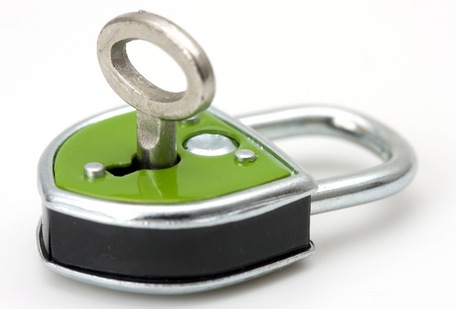
As my career progresses in the merchant account space, I’ve had opportunities to observe and monitor sales figures for several major e-commerce sites. In analyzing the figures, I’ve come across a few interesting practices that can help merchants increase their bottom line and conversions with simple strategies. Whether you’re an affiliate, an SEO consultant or account manager, helping the merchant increase revenue definitely benefits all parties involved.
My 10 Point Plan to Maximize Sales
- Currency: Offering the standard country currency to your potential website customers allows them to feel as though they’re buying from a local merchant and increases conversion. Moreover, a customer’s credit card issuer could reject transactions simply because it’s a different currency and not part of the consumer’s regular buying pattern. For example, if I’ve never bought anything outside the U.S. on my credit card and attempt to purchase a product on a website which tries to charge in Euros, my credit card company will likely reject the transaction.
 A simple solution is to request a currency account from your acquiring merchant account bank. Most banks have over 10 currencies available, and there’s a minimal account maintenance fee involved to open it. If you have significant traffic from a certain country, this is definitely worth looking into.
A simple solution is to request a currency account from your acquiring merchant account bank. Most banks have over 10 currencies available, and there’s a minimal account maintenance fee involved to open it. If you have significant traffic from a certain country, this is definitely worth looking into. - Local Payment Methods: In addition to offering local currencies, there are several localized payment methods. Visa and Mastercard are standard in the U.S., and most consumers have access to these payment methods. But did you know that by not offering debit in Germany, a merchant will lose out on half of the market? Many Germans shy away from credit and don’t even possess a credit card. As for France, in order to remain competitive, merchants must accept the “Carte Bleue”. In China, most consumers use the China UnionPay credit card. Therefore, when entering new markets and analyzing conversions, it’s imperative to ensure merchants are adapting to the local market.
- Language: Translating your website is an inexpensive way to speak your customer’s language! In the U.S. alone, offering a Spanish version taps you into a market that most merchants overlook. Furthermore, when translating a website, the “spokespeople” or visuals should adapt to that market. For example, when translating in Spanish for the American market, individuals pictured on the site should reflect a Latin American origin as this will help consumers relate more to the product or service offered.
- Confidence Symbols: Adding a familiar logo near the process payment button fosters more trust and security in the transaction. Adding the McAfee symbol, the Verisign logo, or any type of lock and encryption standard symbol increases consumer confidence and increases conversion on the payment page. Placement on the payment page is as important as the logo itself. Position the symbols close to where the consumer is asked for payment details and also definitely above the page fold. Other symbols and tactics to cultivate customer confidence can be found at “9 Trust Symbols You Can Use to Increase Conversions and Customer Confidence“.

- Alternative Payment Methods: There are several “alternative” methods of payment that are less common but still effective for closing a sale. In order to avoid diluting sales amongst several payment methods, present these options to your customer upon decline of his/her credit card. A merchant can simply add an extra step for customers wishing to use these payment modes to avoid the extra costs that may result from implementing them. Some examples include online checks, telephone billing or wallet type payments.
- Partial Name Match: Every payment gateway has different fraud checks, and most of them have standard default settings for all merchants. Check these to ensure they’re adapted to the business model in question. For example, having a setting where the customer’s name is matched exactly to the one listed on the credit card could cost you some sales. If this setting is for an exact match, a customer who enters his name as Bob Smith will be declined if his credit card registers under Robert Smith. It’s highly recommended to opt for a partial match setting to ensure slight differences are approved at the gateway level.
- Address Verification: This is similar to the topic mentioned above. A partial address verification is a better option than an exact match. Many merchants choose to simply match the city, state, and zip of the customer to avoid any differences of syntax in the address. This is in reference to payment fraud checks, of course the address must be verified against the USPS database to ensure a valid address for shipping products.
- Cancel Upsell: Even after the best save attempts, some customers decide to cancel their membership or service. In order to maximize revenue from all customers, having a few alternative offers whereby a merchant can receive a CPA might add additional revenue from an otherwise lost customer. For example, if a merchant is selling books at a flat monthly membership fee and a customer decides to cancel, the merchant may offer a membership to an audio book club. This may allow an additional $30 from a customer that’s lost anyway! It’s important for merchants to think of products in the same vertical and to train customer service staff to effectively present these options to customers upon cancellation. This can even be offered at the end of an online cancellation form. Implementing this is inexpensive and can increase revenues with little effort on the merchants’ part.
- Avoid Refunds: When selling online, refunds tend to be slightly higher than physical store sales. As such, losses from refunds can be considerable. One way to avoid refunding a customer is to offer a free product or month of service that can complement an existing order. It costs a lot less to give something for free than to refund a purchase or receive a chargeback!
- Verify Your Decline Codes: This last one is rarely used by merchants, although reviewing why transactions are being declined can actually help increase approvals. Some decline codes are caused by integration issues between the merchant’s site and the gateway, which can be easily fixed. In addition, some decline codes are simply “more information requests” from the bank. In this case, calling the bank can clear up the issue. Decline code wording is different between various banks, therefore asking the bank for their decline code lexicon can provide insight as to why purchases are being declined. Many merchants can increase sales by 5-10% by understanding and properly responding to decline codes.
The above are some basic principles that apply to most merchants in the online space. Understanding the business model in question and applying these elements can increase sales with minimal effort. For more information and a website analysis, feel free to contact me for more specific advice (maria.sparagis<at>directpaynet.com).

